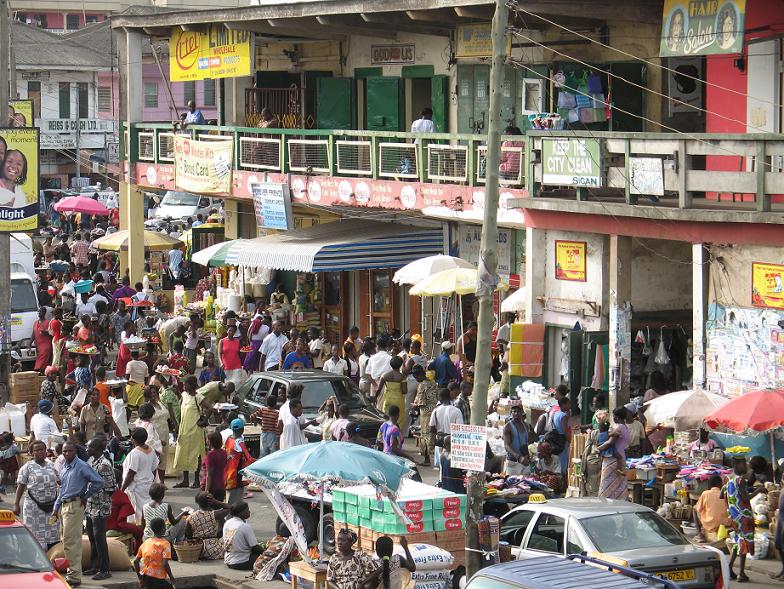In rapidly-growing cities, streets have no names
It may come as a shock to learn that about 1.8 billion people in the world today don’t have an address. That’s not because they’re homeless, but because they live in rapidly growing cities where the streets were never named—cities like Sekondi-Takoradi, in Ghana, which is now working to change the situation.

Sekondi-Takoradi, Ghana. From worldccp.com.
The city, which is about the size of Atlanta, Georgia, was recently mapped and now, 3,440 streets have names while 42,000 properties can claim a physical address. Not that progress was easy. For years, those who wanted to map a city had to make sketches with just rulers and paper at their disposal. Today’s innovators have technology on their side. The team on the project in Sekondi-Takoradi used Google Map Maker to take an aerial photo, which was converted into a map. The process still required painstaking manual steps by 160 volunteers, who numbered buildings, organized the selection of street names, and created temporary street signs. But mapping technology made it possible to get to that point much more quickly than could have happened in the past.
These efforts are well worth it to the nearly 560,000 Sekondi-Takoradi residents, who can now reap the rewards of having an address. And what are those benefits exactly? Well, residents will have the chance make use of city services, like plumbing, electricity, public education, and water. They’ve been surveyed to find out which services would be most helpful. It’s perhaps the most significant improvement naming Sekondi-Takoradi’s streets brings about, considering tax collection for those services is a motivation behind the mapping effort.
While a tax hike may be in their future, residents can also look forward to benefits beyond city services. They can relax with the knowledge that emergency services, like police or an ambulance, will be able to find them if called. They can shop online and have packages delivered—a major bonus for families far from the city center. And they can build a stronger tourism base in their city, too, now that tourists don’t have to worry so much about getting lost.
Not all travelers would be brave enough to visit a city where directions included clues such as “turn at the Chinese restaurant” and “ask the vendor by the tree,” but nary a street name or building number. Now that those street names and building numbers are in place, many more might come to visit and pump up the local economy.
Maybe even you.
